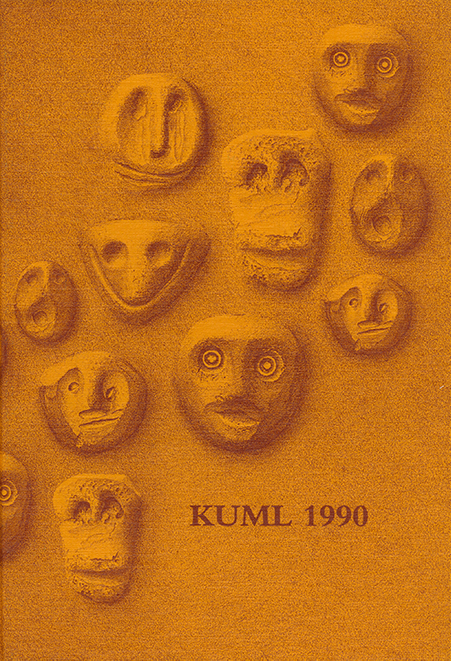Nederby on Fur, a village founded in the later Iron Age. A contribution to knowledge of Viking settlement in the western Limfjord
DOI:
https://doi.org/10.7146/kuml.v37i37.111171Keywords:
Nederby, Fur, village, late iron age, viking settlement, Limfjord, settlement, Viking ageAbstract
Nederby on Fur, a village founded in the later Iron Age
A contribution to knowledge of Viking settlement in the western Limfjord
In 1987-89 5500 m2 of the present village of Nederby (fig. 1-2) were excavated in two main excavation areas at Fur Kirkevej (fig. 3) and Bjerregårdsbakke (fig. 4). Altogether two longhouses, 28 pit hues, ditches, and many pits came to light. House I is the older of the two longhouses. Judging from the arrangement of the last pair of roof-bearing posts before the end wall it must date from the late part of the later Germanic period. House II is a singleaisled structure with roof-bearing wall posts, which may be dated to the end of the 11th century or around the year 1100. Intersections between pit hues show chat these were not all in simultaneous use (fig. 5), and to judge from the C-14 datings they were built over a period of about 300 years.
The pottery included two whole pots and 409 sherds, of which 64 were rim sherds and were datable to the later Germanic and Viking periods, and the early Middle Ages (fig. 6-9). The remaining material consisted mainly of iron slag, of which about 50 kg were found in 19 different pits and pit hues. Of particular interest was a blacksmith's hearth with 16 kg of slag including an angular hearth slag, planoconvex furnace bottom slags, and sintered clay from the sides of the pit. The other finds were very few, consisting only of a couple of rotary querns, bones of horse and pig, a little carbonized corn, a glass bead, and a few objects of bronze and iron.
Today 24 sites with remains of settlement in the later Germanic and/or Viking periods are known in the western part of the Limfjord. Nearly half are coastal settlements. The fjord may therefore have been of considerable importance. At Aggersborg and Nørregård so much imported soapstone has been found chat the places can be classed as trading sites. Nederby on the other hand has produced so few finds that no more than local trade is indicated.
The recovery of a 10th century stirrup at Lille Knudshoved on west Fur implies that we here have a fishery landing site from the Viking period, comparable with the many landing sites chat existed along the coasts of the island before fishery became mechanized at about the turn of the century. If fishery was a significant economic factor as early as in Viking times it could have found expression in a structure and continuity of settlement chat is different from chat in other parts of the country.
The discoveries at Nederby and Lille Knudshoved have underlined a deficiency in the sources, for the importance of fishery cannot be clarified by digging in the actual settlements. The Nederby exvavations have also underlined how important it is for excavations of Viking settlements to take place as surface clearance and not merely as the digging of small pits for dating purposes. Our present knowledge of Viking settlement is based principally on the extensive excavations of farming settlements in central and western Jutland and in Frisian-influenced settlements of the Ribe area. The many coastal communities on the Limfjord are an important supplement to these. The present state of research is insufficient for wide conclusions to be drawn, but suggests chat fishery, small craft navigation, and trade were important for the area as early as in Viking times.
John Brinch Bertelsen
Downloads
Published
How to Cite
Issue
Section
License
Fra og med årgang 2022 er artikler udgivet i Kuml med en licens fra Creative Commons (CC BY-NC-SA 4.0).
Alle tidligere årgange af tidsskriftet er ikke udgivet med en licens fra Creative Commons.


